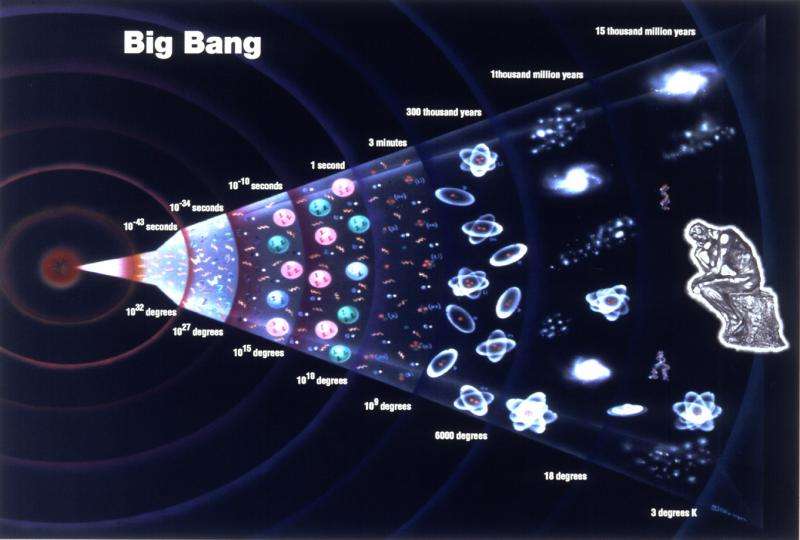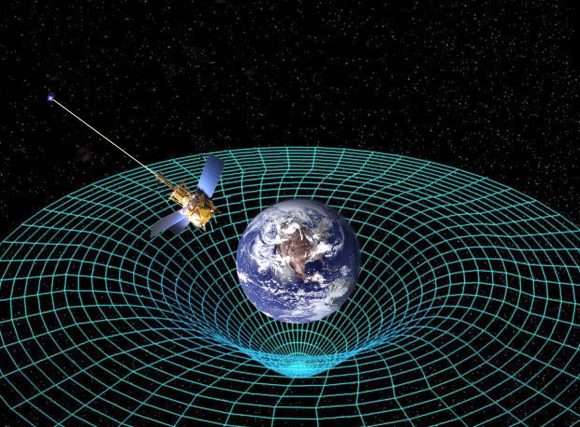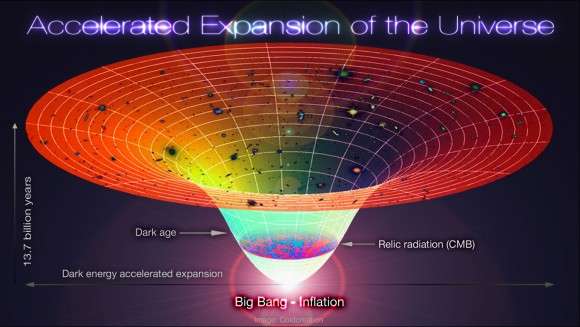Next time you're late to work, blame dark energy

Ever since Lemaitre and Hubble's first proposed it in the 1920s, scientists and astronomers have been aware that the universe is expanding. And from these observations, cosmological theories like the Big Bang Theory and the "arrow of time" emerged. Whereas the former addresses the origins and evolution of our universe, the latter argues that the flow of time in one-direction and is linked to the expansion of space.
For many years, scientists have been trying to ascertain why this is. Why does time flow forwards, but not backwards? According to new study produced by a research team from the Yerevan Institute of Physics and Yerevan State University in Armenia, the influence of dark energy may be the reason for the forward-flow of time, which may make one-directional time a permanent feature of our universe.
Today, theories like the arrow of time and the expansion of the universe are considered fundamental facts about the universe. Between measuring time with atomic clocks, observing the red shift of galaxies, and created detailed 3D maps that show the evolution of our universe over the course of billions of years, one can see how time and the expansion of space are joined at the hip.
The question of why this is the case though is one that has continued to frustrate physicists. Certain fundamental forces, like gravity, are not governed by time. In fact, one could argue without difficulty that Newton's laws of motion and quantum mechanics work the same forwards or backwards. But when it comes to things on the grand scale like the behavior of planets, stars, and entire galaxies, everything seems to come down to the second law of thermodynamics.
This law, which states that the total chaos (aka. entropy) of an isolated system always increases over time, the direction in which time moves is crucial and non-negotiable, has come to be accepted as the basis for the arrow of time. In the past, some have ventured that if the universe began to contract, time itself would begin to flow backwards. However, since the 1990s and the observation that the universe has been expanding at an accelerating rate, scientists have come to doubt that this.
If, in fact, the universe is being driven to greater rates of expansion – the predominant explanation is that "dark energy" is what is driving it – then the flow of time will never cease being one way. Taking this logic a step further, two Armenian researchers – Armen E. Allahverdyan of the Center for Cosmology and Astrophysics at the Yerevan Institute of Physics and Vahagn G. Gurzadyan of Yerevan State University – argue that dark energy is the reason why time always moves forward.
In their paper, titled "Time Arrow is Influenced by the dark energy," they argue that dark energy accelerating the expansion of the universe supports the asymmetrical nature of time. Often referred to as the "cosmological constant" – referring to Einstein's original theory about a force which held back gravity to achieve a static universe – dark energy is now seen as a "positive" constant, pushing the universe forward, rather than holding it back.

To test their theory, Allahverdyan and Gurzadyan used a large scale scenario involving gravity and mass – a planet with increasing mass orbiting a star. What they found was that if dark energy had a value of 0 (which is what physicists thought before the 1990s), or if gravity were responsible for pulling space together, the planet would simply orbit the star without any indication as to whether it was moving forwards or backwards in time.
But assuming that the value of dark energy is a positive (as all the evidence we've seen suggests) then the planet would eventually be thrown clear of the star. Running this scenario forward, the planet is expelled because of its increasing mass; whereas when it is run backwards, the planet closes in on the star and is captured by it's gravity.
In other words, the presence of dark energy in this scenario was the difference between having an "arrow of time" and not having one. Without dark energy, there is no time, and hence no way to tell the difference between past, present and future, or whether things are running in a forward direction or backwards.

But of course, Allahverdyan and Gurzadyan were also sure to note in their study that this is a limited test and doesn't answer all of the burning questions. "We also note that the mechanism cannot (and should not) explain all occurrences of the thermodynamic arrow," they said. "However, note that even when the dark energy (cosmological constant) does not dominate the mean density (early universe or today's laboratory scale), it still exists."
Limited or not, this research is representative of some exciting new steps that astrophysicists have been taking of late. This involves not only questioning the origins of dark energy and the expansion force it creates, but also questioning its implication in basic physics. In so doing, researchers may finally be able to answer the age-old question about why time exists, and whether or not it can be manipulated (i.e. time travel!)
More information: A. E. Allahverdyan et al. Time arrow is influenced by the dark energy, Physical Review E (2016). DOI: 10.1103/PhysRevE.93.052125
Journal information: Physical Review E
Source: Universe Today





















